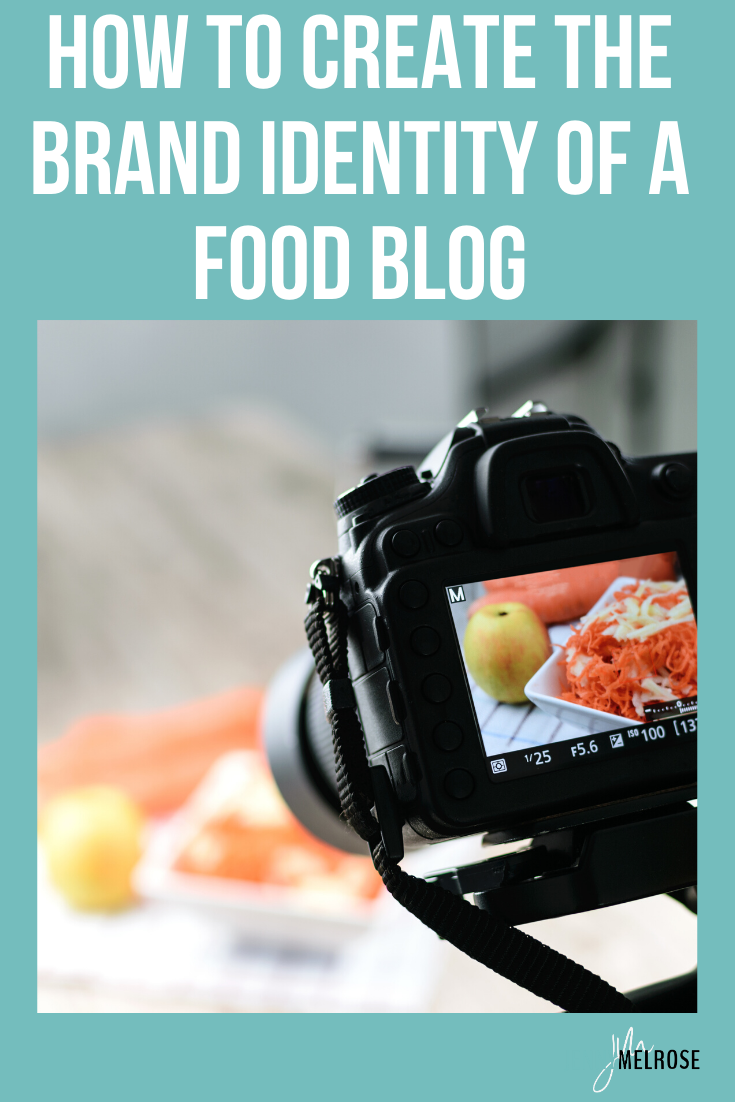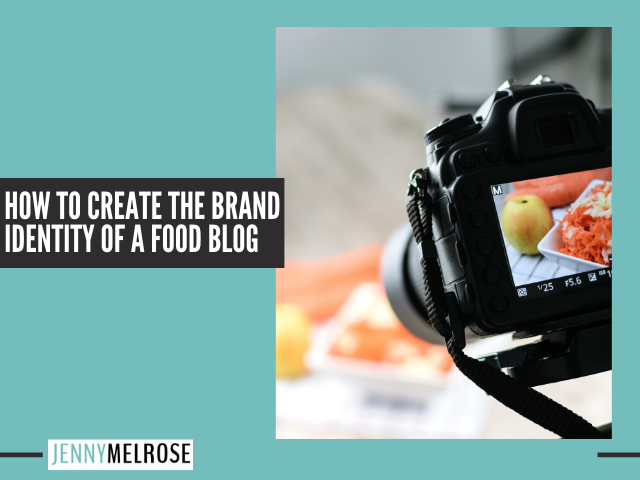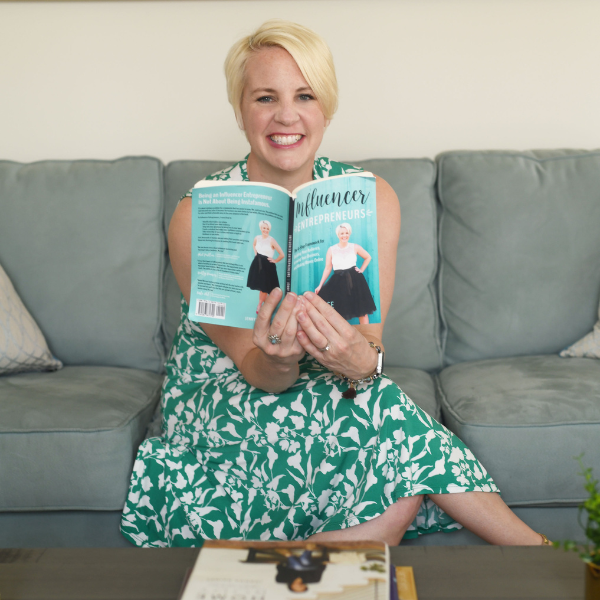If you are a food blogger looking for advice on developing your brand identity, we are breaking down the brand identity definition as well as the what is needed for brand identity design.
IE 153: How to Develop the Brand Identity of a Food Blog with Madison Wetherill

My guest, Madison Wetherill, owns Grace and Vine Studios, which is a web design studio for food bloggers. Madison focuses on helping her clients connect with their audience through strategic web design and brand strategy.
She also hosts The Vine podcast, where she talks about strategy and design tips for food bloggers.
Prior to Grace and Vine, Madison had her own food blog. After she got out of college, she found that she had a ton of free time and didn’t know what to do with it, so she started doing freelance design and blogging at the same time.
Walking into Your Zone of Genius
At the beginning of this year, Madison realized she needed to choose between web design and blogging.
She is a mom of two little boys and was feeling stretched thin. She started to notice that there wasn’t a lot of support for food bloggers in terms of design and brand strategy, so she decided to give all of her effort to that side of her business.
Because she had her own food blog for so many years, she had a ton of connections and is still very much plugged into the “food blogger world.”
Walking into her zone of genius has allowed her to be successful.
What Is Brand Identity?
Brand identity is a term that gets talked about a ton and seems mysterious to a lot of us.
Brand identity can be a lot more complex than some people think. It combines your niche, your ideal audience, your brand messaging, as well as all the visual aspects of your website.
People sometimes think that brand identity is just one of those things, but to have a strong foundation you need all of those things.
Start With Your Audience
Brand identity is over-simplified.
People often come to Madison requesting a logo. But in order to have a strategic logo that accomplishes what you want and need it to do, you have to have all of the other pieces in place.
You have to start with your ideal audience.
This is not just the demographics you’ll find in your Google analytics. Sometimes we aren’t even attracting the right people to our website. It’s more about who you really want coming to your website. Who can you help?
If you don’t know who your person is, nothing else matters.
You have to figure that out in order to build a holistic and strong foundation. This is a piece of brand identity that is often overlooked in the food blogger industry.
Blog About What Your Audience Wants and Needs
It’s often easy to get caught up in posting what’s convenient for you. Maybe it’s just what you’re making for dinner that day.
This doesn’t serve your ideal audience well or solve their specific problems. This also doesn’t attract more of your ideal audience.
This also applies to your content.
You want to create content that is for your audience. If you are trying to reach busy parents with quick and easy dinner recipes, don’t post a lasagna recipe where you make the noodles from scratch. That doesn’t make sense for them.
Building A Loyal Audience
A lot of people will say that they want more traffic and they often forget how important it is to create a loyal audience.
It’s important to have people commenting on your recipes or replying to you on social media and telling you that they love your recipes.
You don’t want to get caught in the rat race of just trying to gain more page views and overcome the algorithms.
Pay attention to what matters when it comes to your audience. Knowing why they follow you and what their question is will help you serve them much better than just knowing your demographics.
The 3 Levels of Your Niche
We talk about identifying our niche and that is super important for food bloggers. It’s not enough to just say “Oh, I’m a food blogger.” What makes you unique as a food blogger?
Madison has 3 levels of questions that she asks in her brand identity questionnaire.
- What is your top-level niche? (I’m a food blogger).
- What is the second level of your niche? (A food blogger who shares dairy-free recipes).
- What makes you unique in your niche? (I use a certain type of ingredients).
So often people get stuck on the second level and don’t move past that.
But as the food blogging industry becomes more and more saturated, you have to find a way to stand out and be set apart. This is what will help you convert visitors from Google and Pinterest into people who will stick around and become that loyal audience.
Sharing Your Story
Your philosophy of the recipes you share and why you do it is important.
A lot of food bloggers take the personal side out of their websites and brands because they don’t want to be a “lifestyle blogger.” It’s still important to share your story with your audience and help them relate to you more.
Make sure your story is tied into your recipe so that the reader isn’t bored by a random story about your life.
You have two different audiences that you serve:
- Your Google/Pinterest audience that will visit your site and probably never come back.
- Your loyal audience that will truly buy into your message and become loyal to you.
Find ways to keep serving that loyal audience well.
Creating Your Brand Identity Design
Most people immediately go to their logo and visuals when they think and talk about brand identity.
Fonts and Colors
Your font and colors are important. It’s important to visually compare your blog design and your logo to your images and see if they match.
If your website is cluttered with tons of graphics and colors, it might not fit. Your logo needs to work with everything else on your site. You don’t want your logo to be the complete opposite of the rest of your site.
Knowing your brand messaging will help you with your design.
If you know your audience is overwhelmed, busy moms of toddlers who need help entertaining, your blog design and logo need to reflect that need. If they come to your site and there are tons of pop-ups and busy images, they’re going to feel even more overwhelmed.
Remember that all of these elements need to reflect back onto who your ideal audience is and how to best reach them.
Colors can be very controversial in other industries, but you just want to make sure that everything looks good together. You want your images and colors to fit the message.
Think strategically about your design, instead of just trying to make it pretty. This helps you to not waste time or money on something you won’t really like in 6 months.
Logos
Your logo is front and center on your website so it’s an easy place to stop and not think about your brand identity anymore.
But that logo influences everything else on your website: your images, any videos you create for your blog, and can also convert into Pinterest image templates.
Everything should feel cohesive. You want your whole aesthetic to feel the same and go together well.
Your brand messaging is all across the board. This comes across in your blog posts, the stories you share, the images you create, your lead magnets, etc.
Having your visuals and your brand message on the same page is so important because they are the key to your solid foundation.
Once you know the who and why of your business, you will know what you should be working on and how to make that happen.
Madison has created a guide that goes right along with what we talked about today. Be sure to grab it so that you can work through this process.
Your brand strategy matters and you want to get it right.
Action Steps:
- If you liked this episode of Influencer Entrepreneurs, please subscribe and leave a fabulous review!
- Join the conversation on Instagram by tagging Jenny when you’re listening to the podcast. She’ll send you a personal message whenever you tag her.



Nice information for a new blogger…it is really helpful